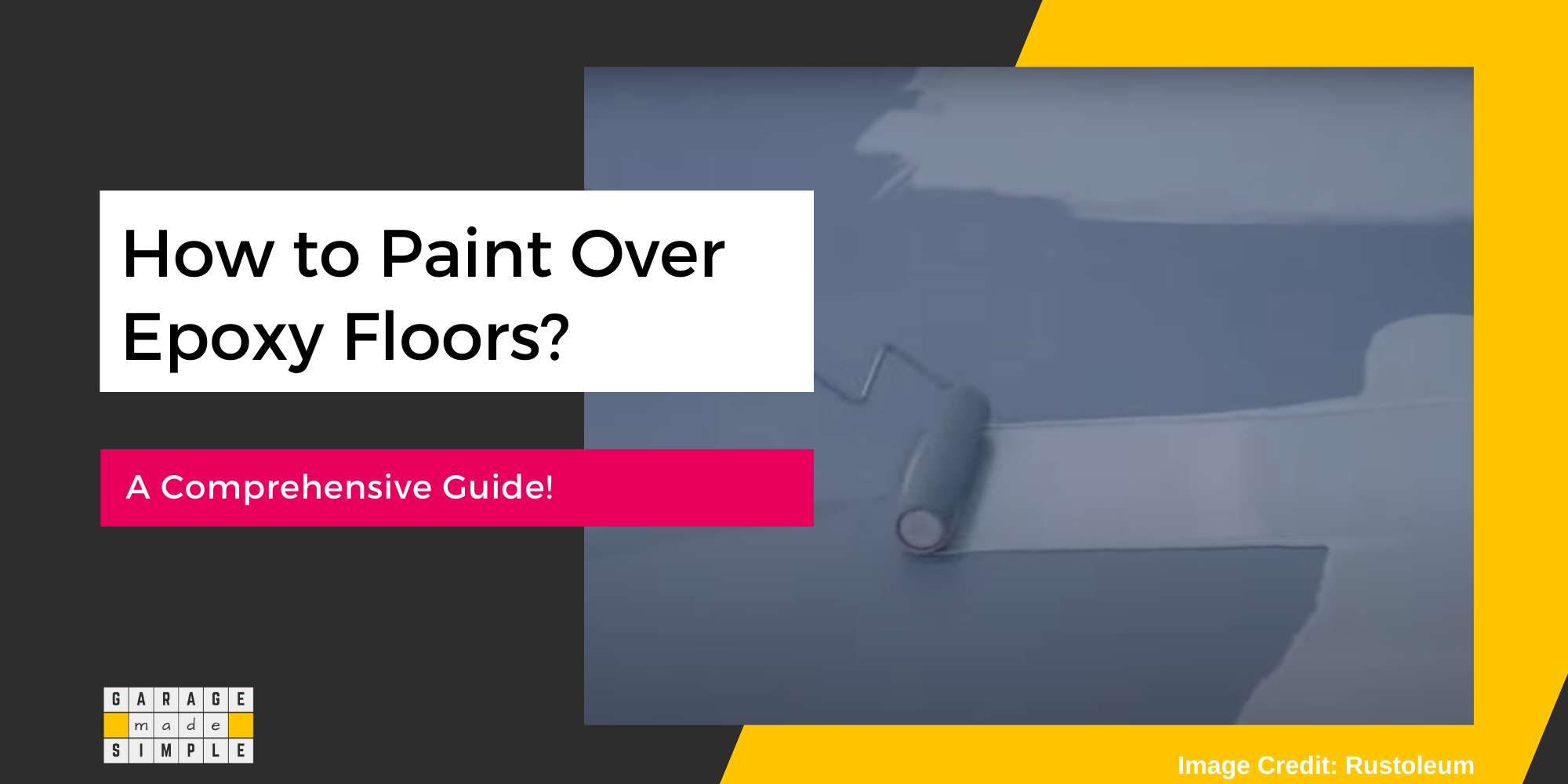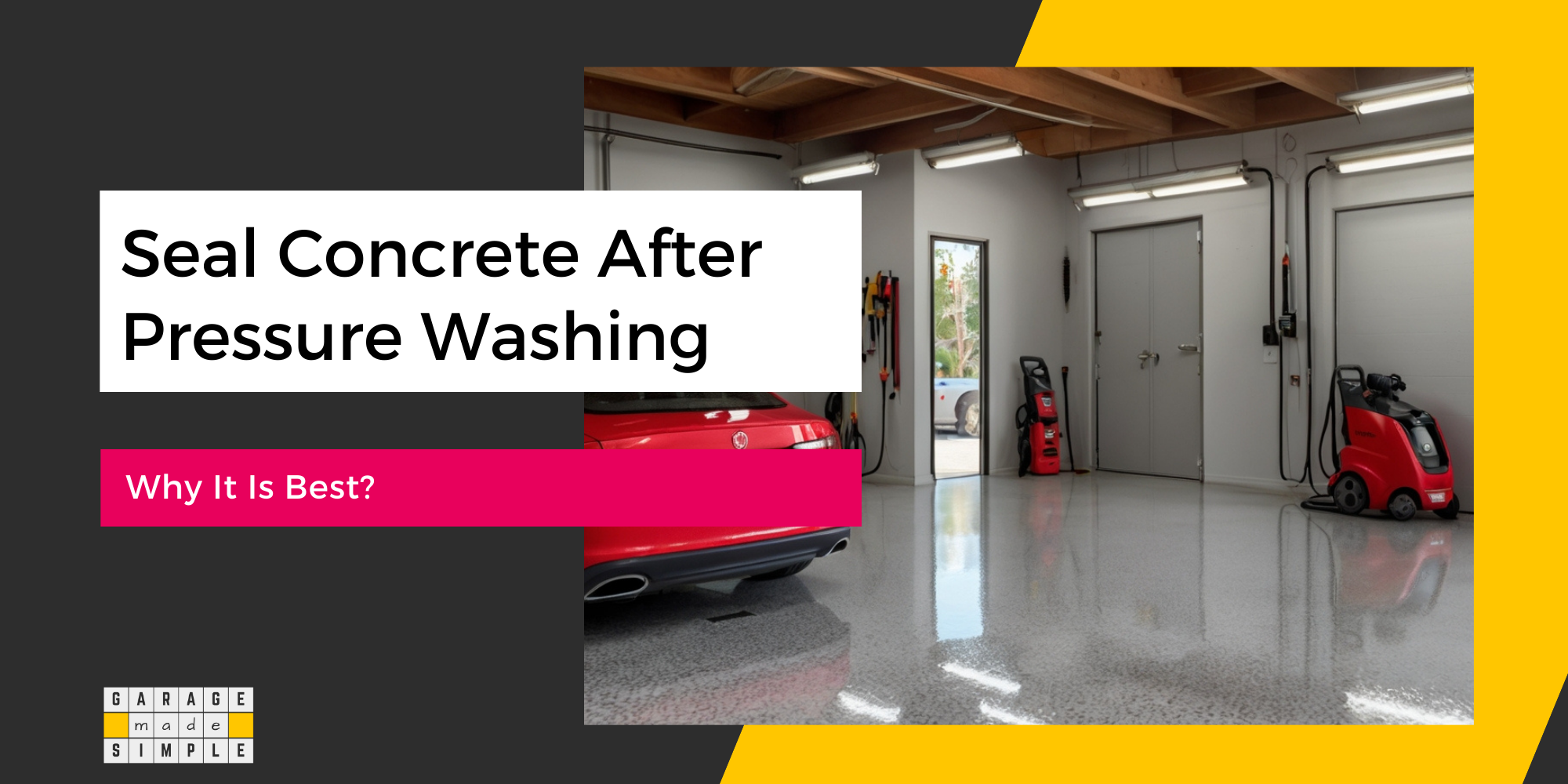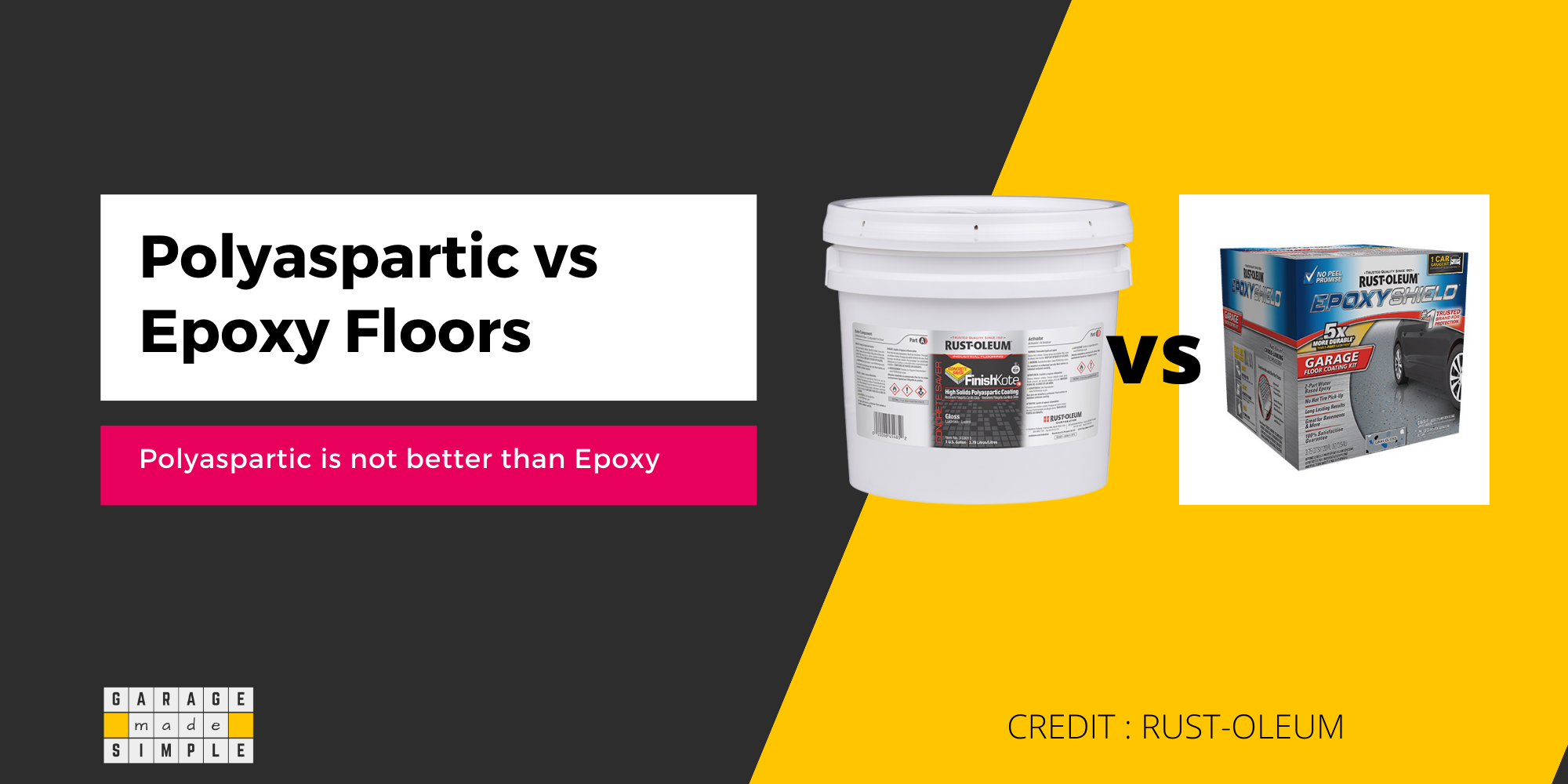7 Downsides of Applying Concrete Sealer in Cold Weather
As an Amazon Associate, I earn from qualifying purchases.
Should you be applying concrete sealer in cold weather on a garage floor? Well the short answer is that it’s not the best idea!
The best time to apply a concrete garage floor sealer is in fall. If you miss the fall window, try to wait it out till spring.

Applying concrete sealer in cold weather can result in insufficient curing and a soft ineffective sealer film. Your objective of protecting the concrete garage floor will not be met.
You will just end up wasting money.
KEY TAKEAWAY – 7 Downsides of Applying Concrete Sealer in Cold Weather:
- Prolonged drying time
- Compromised curing
- Surface imperfections
- Moisture trapped in concrete
- Limited application window
- Weather dependence
- Reduced longevity
How do Different Types of Sealers Cure?
Concrete sealers come in various types. The two types that are commonly used on concrete garage floors are Topical Epoxy Sealers and Penetrating Sealers.
Topical Epoxy Sealers form a protective film on the surface of the concrete. They cure through a process called solvent evaporation.
The solvent in the sealer evaporates, allowing the film-forming polymers to bond together and create a barrier against moisture and stains.
Recommended Epoxy Concrete Garage Sealer
Rust-Oleum 292514 EpoxyShield Premium Floor Coating Kit, Clear
Ideal for use on interior coated or bare concrete surfaces including garages, basements, workshops and more.
Penetrating Sealers, on the other hand, penetrate into the concrete and react chemically to form a protective barrier. They typically cure through a process called densification.
The sealer’s active ingredients penetrate the concrete’s pores and react with the minerals to create a solid and durable protective layer.
Recommended Solvent Based Penetrating Sealer
Armor SX5000 Solvent-Based Silane Siloxane Sealer for Concrete
- Reduces surface water absorption by up to 95%
- Reduces damage caused by snow, ice, and de-icing salts
- Will last for up to 7-10 years
Factors Affect Sealer Curing in Cold Weather
Applying concrete sealer in cold weather poses challenges due to several factors that impact the curing process as under:
1. Film Forming Temperature
The chemistry of a type of sealer dictates a specific temperature requirement for proper film formation.
The film forming temperature (FFT) is the minimum temperature at which the sealer can effectively cure. In case the ambient temperature is below FFT, the sealer will not cure or cure only partially.
Reputed manufacturers have guidelines that clearly state the FFT. You can get this information either from the product label or the product data sheet.
2. Evaporation Rate
Cold weather tends to slow down the evaporation rate, which can prolong the drying time of the sealer. Adequate drying time is necessary for the sealer to form a structurally strong and protective film.
In case the temperature is too low (below FFT) solvent evaporation is not sufficient and a film does not form at all.
It’s important to allow sufficient time for the sealer to dry completely and form a strong film before subjecting it to foot or vehicle traffic.
3. Condensation and Dew Point
Cold temperatures can lead to condensation on the concrete surface, especially during temperature fluctuations. This condensation can affect the sealer’s ability to adhere properly to the concrete.
It’s essential to avoid applying the sealer when condensation is present or when the dew point (the temperature at which condensation occurs) is near or below the surface temperature.
4. Moisture Traps
Cold weather often results in moisture getting trapped within the concrete, which can affect the curing process and compromise the sealer’s performance.
Before applying the sealer, ensure that the concrete is dry and free from any moisture-related issues. Properly addressing any existing moisture traps, such as drainage problems or cracks, is crucial to prevent future damage.
5. Surface Temperature Differences
In cold weather, there can be significant temperature differences between the concrete surface and the surrounding environment.
These temperature variations can impact the curing process, as the sealer may dry unevenly or develop cracks.
It’s important to monitor and balance the surface temperature by allowing the concrete to reach a temperature within the recommended range before applying the sealer.
The Right Temperature to Apply Concrete Sealer
The ideal temperature range for applying concrete sealer is between 50°F (10°C) and 90°F (32°C).
However, double check on this as different products may specify a slightly temperature range.
Applying the sealer outside the recommended temperature range can lead to inadequate curing and compromised performance.
If the temperature is too low (around or below FFT), the sealer may take longer to dry or fail to cure properly. On the other hand, if the temperature is too high, the sealer may dry too quickly and form a weak film.
Keep in mind that the temperature range is applicable both to the concrete garage floor temperature and the ambient temperature.
Before applying the sealer, ensure that the concrete surface and the surrounding air temperature are within the recommended range.
Keep an eye on the weather forecast as well. Avoid applying the sealer if the temperature is rapidly dropping, as this will slow down the curing process.
Should You Seal Concrete Before Winter?
Sealing your concrete garage floor before the winter season provides several benefits.
The winter months can be particularly harsh on concrete surfaces due to freeze-thaw cycles, moisture penetration, and the use of de-icing chemicals.
By sealing your garage floor before winter, you can minimize potential damage caused by these elements and extend the lifespan of your concrete.
Before applying the sealer, ensure that the garage floor is clean and in good condition. Repair any cracks or damage and thoroughly clean the surface to remove dirt, stains, and debris.
Applying the sealer on a clean and sound surface will enhance its effectiveness and durability.
Moreover, the temperature and weather conditions in Fall are likely to be within the recommended range.
The Best Time of Day to Seal Concrete Garage Floor
The timing of concrete sealer application can play a role in the curing process, especially in cold weather. Consider the following factors when choosing the best time of day to seal your concrete garage floor:
Weather Conditions
Pick a day with dry weather and moderate temperatures. Avoid sealing on days with high humidity, rain, or extremely cold temperatures. Moisture or excessive cold can affect the sealer’s ability to cure properly.
Sunlight
Applying the sealer when the sun is out will help accelerate the drying process, especially in cold weather. The sunlight provides warmth, which aids in the evaporation of moisture and promotes better curing.
Time of Day
Typically, the morning or early afternoon can be a good time to apply the sealer. This allows sufficient time for the sealer to dry and cure before nighttime temperatures drop significantly.
Avoid sealing in the late afternoon or evening, as colder temperatures overnight can impede the curing process.
Thank you very much for reading the post. I do hope you found it informative and useful.








